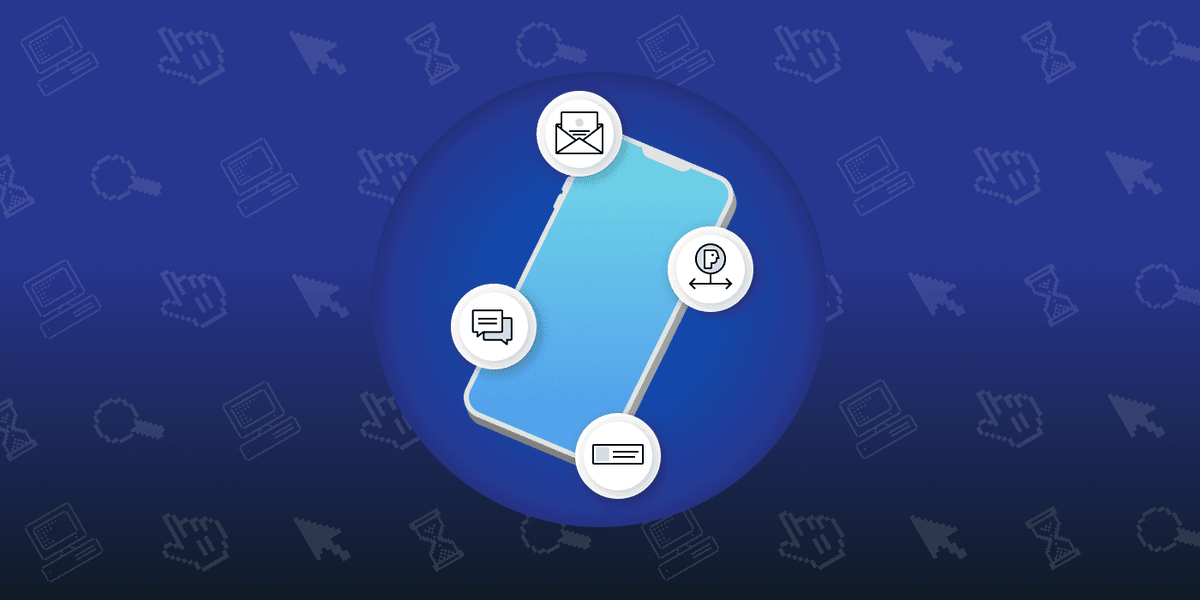How Cross-Channel Engagement Is Changing the Digital Landscape
Published on November 03, 2020/Last edited on November 03, 2020/4 min read


Magith Noohukhan
Product Evangelist, BrazeRemember when email was the only digital channel brands used to engage with their customers? Remember when desktop PCs were the only way to access emails? Yes! But today we’ve come a long way from the days when email was the only channel brands used to communicate with their consumers (whether we’re talking promotional or transactional messaging).
The evolution of devices and platforms paved the way to key new channel developments such as SMS, web push notifications, mobile push notifications, in-app messages (IAM), Content Cards, and the list goes on. And the strongest marketing results come with combining these tools into a cohesive strategy. Research conducted by Braze has found that communicating with customers through a single channel increases engagement rates by 179% compared to a control group that received no messages. Better yet? When users receive cross-channel messaging, those engagement rates can rise by as much as 844%, compared to the control.
In today's world, your consumers have the opportunity to interact with multiple channels and multiple devices, but they still expect a seamless connected customer experience no matter how they’re choosing to engage. Given that, one question has become increasingly essential for marketers: Are you using the right channel at the right time to deliver the right message?
Make a First Great Impression
It has become a norm that when any user signs up for your products or services, they expect a confirmation email acknowledging their sign-up. For brands, this is a great opportunity to educate your users not just about the products/services you offer, but also to be transparent about your brand’s user data and privacy policies, your service’s trial period and cancellation policy (if there is on), and how they can to unsubscribe from promotional emails if they wish to. (After all, there’s few pros—and plenty of cons—when it comes to sending emails that recipients don’t want to receive.)
This is also an ideal moment for brands to encourage users to download their app, welcome them to the app, educate them about all of its key features, and promote any app-exclusive deals and products that are available to them. When you’re looking for ways to welcome new app users, one of the best ways is by leveraging IAMs. This channel is designed for effective inside-the-app messaging, allowing you to reach new users with highly personalized content surfaced seamlessly within the context of your app.
As your users are being onboarded, “priming for permissions” to send them push notifications is the key to unlock an additional messaging channel during the onboarding process. Push notifications are a powerful tool for urgent outreach, and are a great way to let your users know about breaking news, time-sensitive sales, and other in-the-moment information. By leveraging IAMs to explain to new users why you want to send them push (and what they’ll get out of it), you can expand your messaging mix to three channels right at the start of your customer onboarding journey.
Stay Connected Throughout to Create a Seamless Experience Beyond Onboarding
Understanding your consumers every step of the way is key in creating seamless customer experiences. That more true today than ever, with our current challenging landscape making it harder for brands to hold onto the customers they acquire. Keeping customers excited by (and engaged with) your brand is necessary if you want to succeed over the long haul, in good times and bad. That means ensuring that the messages you’re sending are relevant and meaningful to the people receiving them.
Humans are different, we all engage with brands at our own times and convenience. Some are early birds, some are night owls. Some like email, some like a push, some are high-end shoppers, and some of us are discount seekers. As a brand, listen to your customers, use that incoming data and smart segmentation and message personalization to ensure that you’re sending the right message through the right channel at the right time.
The Cross-Channel Difference
If you embrace a personalized, cross-channel approach to customer engagement, you’ll find that it’s easier to drive strong business results while also supporting customer loyalty. That cross-channel difference has already made a big impact on the larger digital marketing landscape—and could have a positive impact on your brand’s marketing efforts, too.
To learn more about the impact that a cross-channel strategy can have on your marketing outcomes, check out the Braze Cross-Channel Messaging Guide.
Related Tags
Be Absolutely Engaging.™
Sign up for regular updates from Braze.


